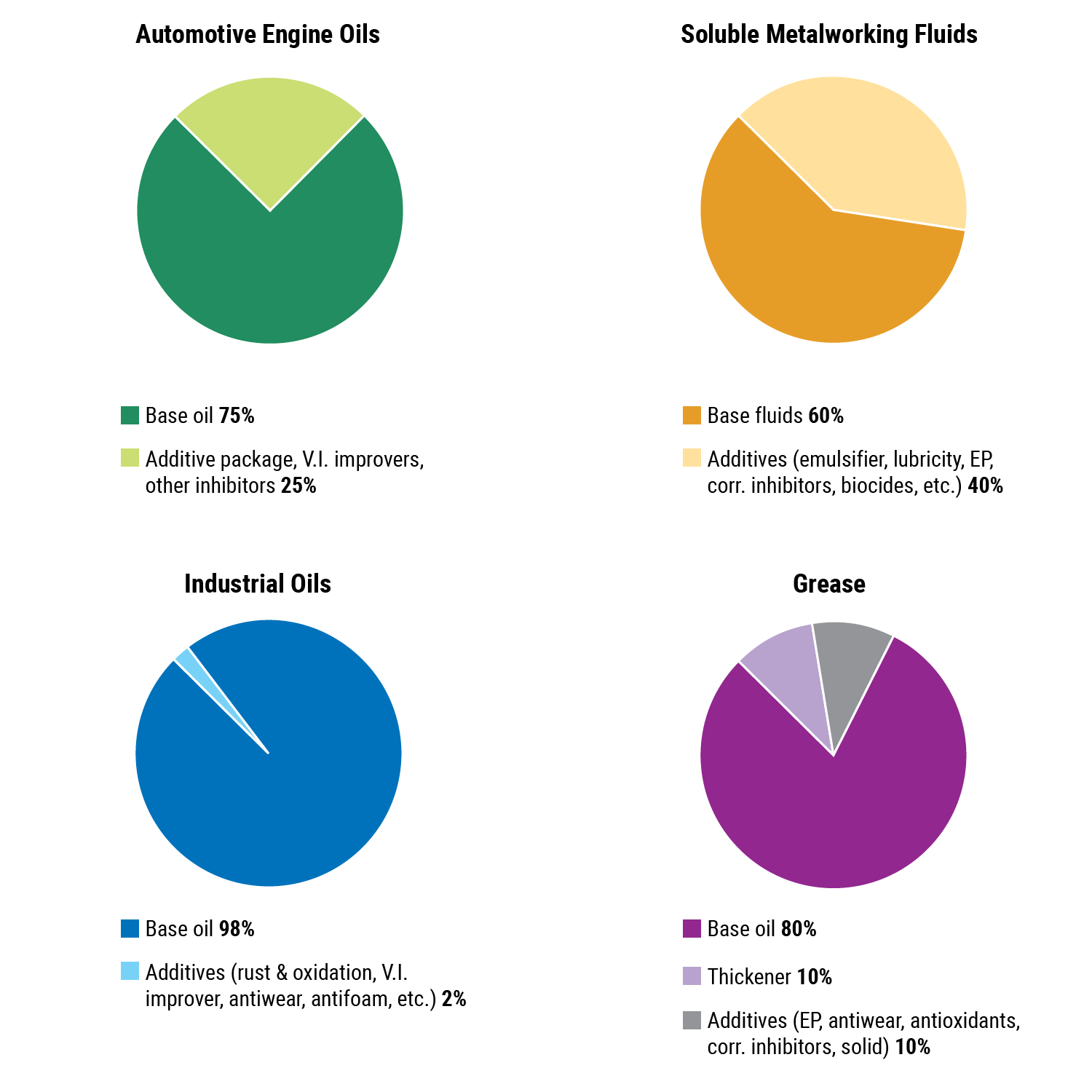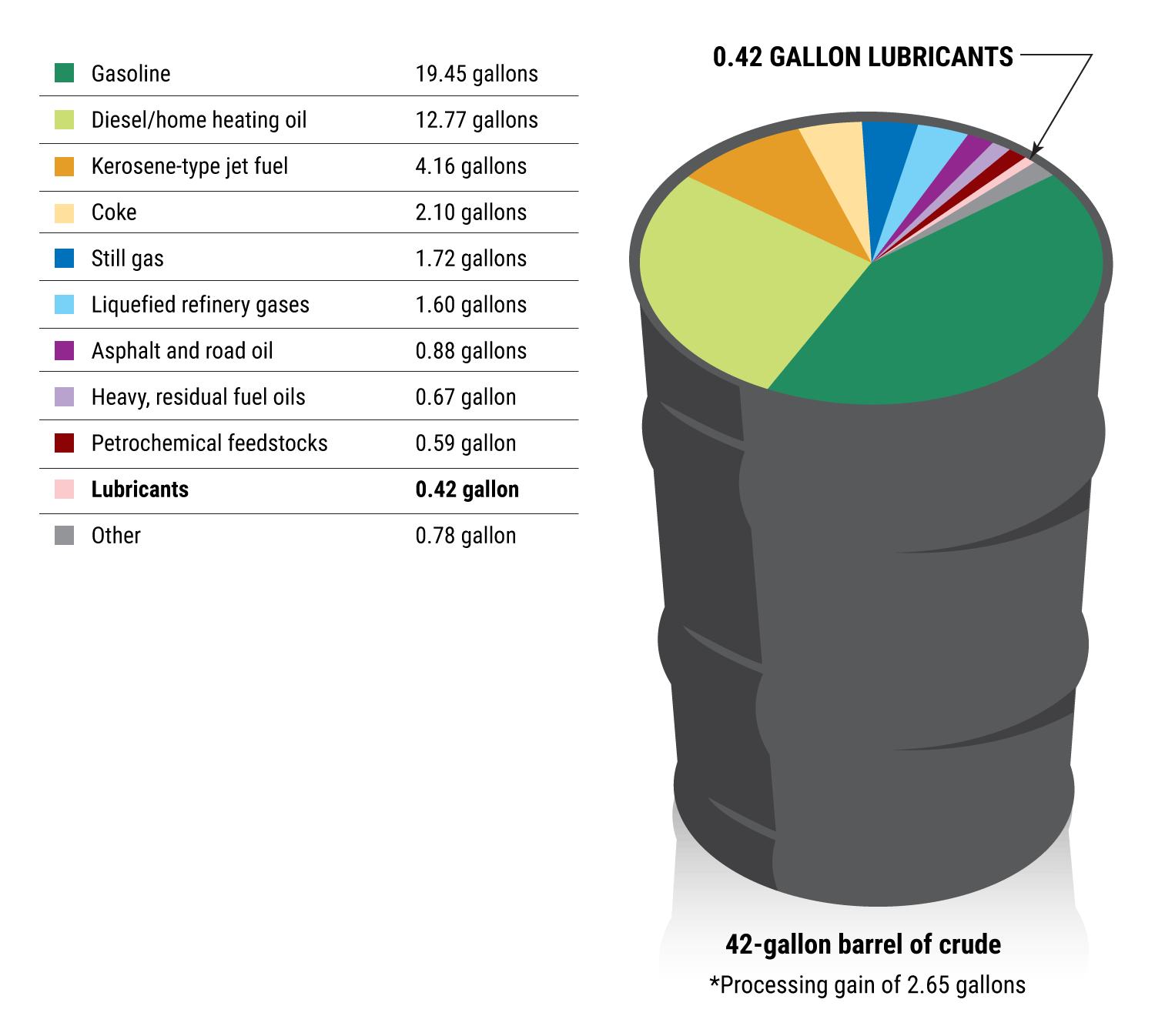Understand the basics of the lubricants industry, from base oil groups to additive treat rates.
Base Stocks
Base oil makes the finished lubricants world go round, making up anywhere from 60%–98% of typical formulations. Created nearly 30 years ago, the American Petroleum Institute’s base oil groups are the global standard and were established largely to aid in base oil interchange for automotive engine oils.
In addition to the sulfur and saturates content and viscosity index that define the API group, base stock marketers often provide data on several other parameters, like flash and pour points, viscosity and color.
With modern base stocks falling more along a spectrum rather than into distinct categories, some industry players believe the system is now outdated and needs to be updated.
API Definitions
| API GROUP | Sulfur % Wt. | Saturates % | Viscosity Index | typical applications | |
|---|---|---|---|---|---|
| Group I | > 0.03 | And/or | < 90 | 80-119 | Marine, industrial, process oils, older passenger car motor oils |
| Group II | ≤ 0.03 | And | ≥ 90 | 80-119 | Industrial, 10W-XX passenger car motor oils, 15W-XX heavy-duty diesel engine oils |
| Group III | ≤ 0.03 | And | ≥ 90 | ≥ 120 | 0W-XX and 5W-XX PCMO and HDMO |
| Group IV | 0.03 | All Polyalphaolefins (PAOs) | All Polyalphaolefins (PAOs) | All Polyalphaolefins (PAOs) | PCMO and industrial |
| Group V | All base stocks not in Group I-IV (naphthenics, non-PAO synthetics) | All base stocks not in Group I-IV (naphthenics, non-PAO synthetics) | All base stocks not in Group I-IV (naphthenics, non-PAO synthetics) | All base stocks not in Group I-IV (naphthenics, non-PAO synthetics) | Process oils, transformer oils, industrial lubricants, gear oils, transmission fluids, compressor oils, engine oils |
What Are Group II+ and III+?
| Industry-established “categories” originally developed to describe base oil suitable for SAE 10W-XX and 5W-XX multigrade motor oil blending. They are marketing terms, not official API definitions. |
|---|
| • Group II+ is generally recognized as referring to Group II oils with viscosity index of 112 to 119 and Group III+ as referring to Group III oils with VI of 130 or greater. |
| • Viscosity grades are tailored to making passenger car motor oils. |
| • More recently, companies have begun marketing Group I+. The same principal of higher-end viscosity index applies. |
Additives
Additives comprise varying proportions of finished lubricants. Metalworking fluids tend to contain the most, at 10%–40% by volume of the formulated product. Automotive engine oils follow with 15%–25% additives and grease contains anywhere from 0%–10%. Industrial oils rely heavily on the quality of their base oil, with many using 2% additives at the most.
Additive Treat Levels

Finished Lubricants
A 42-gallon barrel of crude oil (approximately 0.14 metric tons) outputs nearly 45 gallons of products, 3 gallons more than the input due to what’s known as processing gain, whereby the products have a lower specific gravity than the crude. Overshadowed by higher-value products like gasoline, jet fuel and diesel, just a small portion of a barrel is allocated to the production of lubricants.
Source: U.S. EIA
How Much Lubricant in a Barrel of Crude Oil?

